Social and economic development. Рубрика в журнале - Economic and Social Changes: Facts, Trends, Forecast
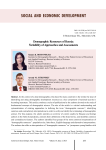
Demographic resources of Russia: Variability of approaches and assessments
Статья научная
In the context of a deep demographic crisis faced by many countries in the world, the issue of identifying and using demographic development resources as a key component of national security is becoming important. This article continues a series of publications by the authors devoted to the study of fundamental concepts of demographic science. The aim of the article is a critical understanding and systematization of existing approaches to defining the term “demographic resource”, identifying common and contradictory interpretations in order to unify and clarify the terminology of demographic science. For this purpose, the article provides an overview of current studies by Russian and foreign authors in the field of population, presents their definitions of the listed terms, and identifies common and contradictory features. The authors identified four groups of the most common interpretations of “demographic resources”: population size, labor force, English-language and alternative interpretations. The authors also offer an interpretation of “demographic resources” as “prosperous young families with children”. An attempt was made to critically understand and generalize disparate approaches in order to systematize and unify the terminology of research in the field of population. The study used methods of comparative analysis, content analysis of scientific literature, as well as statistical analysis using current data from Rosstat. The novelty of the work lies in the proposal of the authors’ definition of the concept of “demographic resources”, taking into account the specifics of modern demographic challenges and meeting the tasks of public administration in the field of population. The main results are presented by a grouping of approaches, accompanied by a statistical assessment of the demographic resources of Russia. Future research will be aimed at a more in-depth analysis of each of the identified types of demographic resources, as well as the development of methodological recommendations for their practical use in the state demographic policy of Russia
Бесплатно
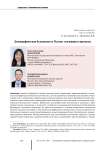
Demographic security of Russia: trends and forecasts
Статья научная
Currently, the analysis of trends and the assessment of promising parameters characterizing the situation regarding demographic security in Russia attract the attention of the country’s leading scientists, officials, managers of various levels, and politicians. Such interest is due to the understanding of the role of the demographic component as the key one in ensuring national security. The parameters of demographic security are contained in several strategic initiatives, in particular in the National Security Strategy of the Russian Federation. This determines not just the relevance, but also a dramatic increase in the importance of analyzing the current state and trends of demographic indicators, as well as building their forecast estimates in order to design and construct more favorable parameters for the development of society. Methodological basis of the study includes techniques and methods of comparative analytics, descriptive statistics and adaptive forecasting. The analysis and development of forecasts were carried out on the basis of official statistics provided by Rosstat. When assessing differences in population dynamics n accordance with current accounting and with the data obtained as a result of recalculation using the results of the 2020 All-Russian Population Census, we identified different periods of depopulation. The analysis of retrospective data on demographic parameters and the demographic forecasts determine in the short term the continuation of the second wave of depopulation, while its attenuation and the vector toward achieving demographic security are possible if an optimistic scenario is implemented. An optimistic scenario (achieving an increase in the birth rate) is assumed when developing a mechanism that allows implementing the proposed set of recommendations - measures aimed at increasing the birth rate.
Бесплатно
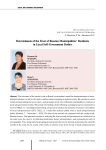
Determinants of the trust of Russian municipalities’ residents in local self-government bodies
Статья научная
The relevance of the article is due to Russia’s orientation toward the democratization of socio-political relations, as well as the need to address issues emerging in modern society. We consider a system of factors determining the level, nature, and dynamics of the trust of Russian municipalities’ residents in local self-government bodies. We provide the findings of the following sociological surveys conducted in the Tver Oblast: 1) a sociological monitoring carried out to analyze the dynamics of citizens’ perceptions of local self-government (2012-2022); 2) a study that analyzes public trust in local self-government bodies (October 7 - November 1, 2022). The data of our research are compared with the results of all-Russian surveys. Our approach consists in analyzing the trust in local self-government as a whole and, at the same time, the trust in its individual institutions (head, administration, and representative body of municipality). This, along with the grouping of trust factors that we put forward, determines the scientific novelty of the work. In the course of the study, we observe a low level of trust in local self-government bodies (compared, for example, with trust in the president), its undulating dynamics, predominance of an increasing trend, tendency toward its depersonalization, and formation of an institutional type of trust. We propose a theoretical and methodological framework for designing a system of determinants of trust in local self-government bodies and identify groups of factors influencing it. We reveal a weak connection of the dynamics of trust in local self-government bodies with the stages of the economic cycle, the importance of the material well-being of citizens as a trust factor; besides, we find that citizens’ trust in local self-government bodies is conditioned by their perception of the economic situation. The factors that have the most significant influence on the growth of the level of trust in local authorities include positive assessment of the work of local self-government bodies, citizens’ positive assessment of their own experience of interaction with local self-government employees, high or average assessment of the degree of influence of an ordinary citizen on the activities of local self-government bodies. Perceptions concerning the presence of corruption in municipal bodies, inconsistency of real municipal practices aimed at minimizing the participation of citizens in managerial decision-making, and people’s expectations have a negative impact on the credibility of this institution. We propose ways to solve these problems. Theoretical significance of the work is determined by the possibility to use the theoretical and methodological framework for further theoretical and empirical research. Practical significance is associated with the possibility of developing state and municipal policy measures aimed at improving ways to increase public trust in local authorities.
Бесплатно
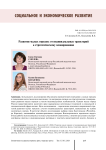
Development of small cities: from individual trajectories to strategic planning
Статья научная
The relevance of the study is due to increased attention to small cities and improving the quality of life, which is directly related to the strategic planning of small cities development, taking into account individual features. However, small cities in Russia are characterized by negative trends in the social and economic spheres. The aim of the study is to identify key areas of small cities development strategies, taking into account individual trajectories identified on the basis of expert assessments. The city of Kostomuksha of the Republic of Karelia, which is the administrative center of Kostomukshsky Urban Okrug, was chosen as the object of research. We use qualitative sociology methods, namely, the results of an expert focus group and individual interviews with representatives of government, business and non-profit organizations. We reveal problems in the social sphere typical for the city of Kostomuksha and for small cities in general: low level of accessibility of education and healthcare services, including personnel in these areas, migration outflow of young people, lack of renovation of housing stock. Regarding the stakeholders of territorial transformations, we find out that the main feature of Kostomuksha is predominant participation of large socially oriented businesses in addressing urban problems with rather weak participation of citizens. As a result of the research, we have identified new individual development trajectories: sports and wellness tourism, which must be taken into account in the development strategy of Kostomuksha. We conclude that it is necessary to design strategies for the development of territories, taking into account the opinions and activity of local communities, opportunities for collaboration of various actors in addressing social issues of small cities. The novelty of the research lies in expanding the methodological approach to strategic planning for small cities development using original tools of qualitative sociology - expert assessments of stakeholders in territorial development.
Бесплатно
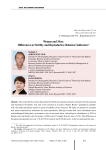
Differences in Fertility and Reproductive Behavior Indicators
Статья научная
The search for the reasons that determine birth rate dynamics remains relevant from the practical and theoretical viewpoints. The aim of our research is to assess whether Russia’s population complies with the stable population model in terms of stability of sex structure. We make an attempt to calculate and assess reproduction indicators for male population. Having revealed that such calculations have methodological limitations, we propose a way to overcome them. According to calculations, in 2019 in Russia, the total fertility rate for women (1.504) was 9.1% higher than for men (1.378). The difference in the gross reproduction rate was 3.1% (0.730 for women and 0.708 for men), in the net reproduction rate – 6.0% (0.719 for women, 0.678 for men). The difference in the value of the rate of natural increase in women and men is 5.0% (-11.5 and -12.1%, respectively). Due to the presence of two quantitatively different reproduction modes in the female and male generations, we doubt it would be possible to implement a stable population model. The age-related model of fertility in men, as well as in women, is shifting toward older ages (in the groups aged 25–29 and 30–34). The average age when men become fathers has also increased: from 31.51 years in 2011 to 32.40 in 2019. We also analyze the fertility rate model according to the age of the mother and father. We have determined that in most cases (70% in 2019) the father is older than the mother, in 19% of cases the mother is older than the father, in 11% – both parents are of the same age. Fathers are 1–4 years older than mothers in 44–64% of cases (depending on the age of the mother). It is noteworthy that the difference in the age of parents is higher when children are born out of wedlock. In the future, we find it interesting to study gender-related differences in reproductive motivation and other determinants of male and female fertility.
Бесплатно
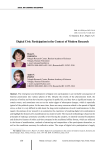
Digital civic participation in the context of modern research
Статья научная
The emergence and development of digital civic participation is an inevitable consequence of Internet penetration into various spheres of life. Despite the novelty of the phenomenon itself, the practices of online activism have become engrained in public life; and they have a significant impact on certain events, and sometimes even act as the main trigger of subsequent changes, which is especially typical of the political system. At the same time, there are many concerns related to the spread of digital civics, so that it is very difficult to talk about the long-term implications of such transformations. In this regard, the purpose of our research is to summarize the experience of studying digital civic participation and highlight the features of its manifestation in a modern world. The research methodology is based on the principles of making a systematic scientific review. During the analysis, we identify essential foundations and distinctive features of online activism compared to the traditional offline format, which are reflected in the forms of manifestation, methods of attracting and composition of the participants themselves, as well as the conditions necessary for collective action. The scope of digital civic participation is largely ensured by the ease of entry into public affairs, and the variability of activities and types of networking. Despite the prevalence of the thesis about the purely external visibility of online activism and its destructive consequences, specific empirical studies do not confirm this conclusion. Nevertheless, the threats of the spread of ICT are quite real and go far beyond the virtual space. In conclusion, we formulate several polemic provisions on possible ways to overcome the contradictions in this area. Our research contributes to the development of scientific ideas about the specifics of digital civic participation and the disclosure of the potential of its application from the standpoint of modern challenges and threats.
Бесплатно

Dynamics and age structure of migration flows of Far Eastern regions
Статья научная
Migration has long been the main reason for population decline in the Russian Far East. Taking into account a large number of methods and approaches to the analysis and assessment of population migration, we put forward an original methodology for assessing the parameters of population migration between pairs of regions of the Far East. Our methodology for estimating the number of migrants uses the method of age shifting (the component method) together with elements of the method of migration movement balance. In contrast to existing approaches to assessing migration mobility, our approach helps to obtain minimum migration values with a certain range of possible values that guarantee the preservation of population balance. Of particular interest is assessment of migration by age group in the COVID and post-COVID period. A comparative analysis of migration balance data based on official statistics and the values obtained by own calculations reveal a number of anomalies and tampering with official information on population number, birth rate and mortality in children and adolescents under 15 years of age. We reveal an overestimation of the number of newborns in 2018-2021 in five regions of the Far East. In the pandemic years (2020-2021) we observe a small migration increase for population groups aged 17-19 and 20-29 from regions outside the Far East. Migration growth in the three leading regions (the Khabarovsk and Primorye territories and the Republic of Sakha) has age-specific features and changes over time
Бесплатно
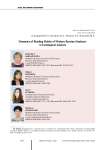
Dynamics of reading habits of modern Russian students: a sociological analysis
Статья научная
The features of reading habits and their transformation are the subject of interdisciplinary scientific analysis, as well as of a broad public discussion about the effective response of the Russian state to the challenges of a technogenic society. The areas of sociological reflection on this phenomenon are quite broad, such as the reading crisis, interest in books, the impact of globalization, e-books and other electronic formats for reading. Sociological analysis allows finding answers to questions about the state and features of reading habits as a component of social capital, the social quality of specific geographical, social and demographic groups. Bookishness (love and respect for books) is an important feature of the Russian mentality, an indicator of socio-cultural continuity, which is why the study of reading habits of modern Russian students' culture acquires particular relevance. This article presents the results of a sociological research conducted in Astrakhan and Volgograd (2016, 2019), as well as in Moscow (2019). These empirical studies provide insights into the main trends in the dynamics of the reading habits of modern Russian students, and help to conduct a comparative analysis of these habits of Russian cities' students, among other things in terms of socio-cultural space levels (the “core - periphery” coordinate system). We identified the dominance of the axiological component of reading habits; determined that classical literature is the basis of the content structure of reading; noted that the frequency of reading habits falls with decreasing population of the settlement - people read more in Moscow, less in the province. We think it would be promising to use the results and conclusions in monitoring studies and sociological projects on similar topics in other regions, and to continue studying the obtained results in the framework of interdisciplinary analysis.
Бесплатно
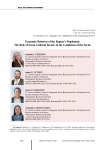
Статья научная
The transformations taking place in the socio-cultural space of Russia in the last three decades determine various aspects of human behavior, including economic behavior. The aim of the study is to assess the influence of the basic components of the socio-cultural space of the Arctic region on how the population develops economic behavior strategies, among which are values, norms, attitudes, social well-being, social capital, human capital, identity, and cultural consumption. The article provides a brief description of modern approaches to the study of economic behavior based on interdisciplinary links between economics, sociology and other sciences. Further, with the help of sociological research, we identify and describe trends in the economic behavior of the population of an Arctic region – the Arkhangelsk Region. With the help of G.S. Pospelov’s decision matrices we assess the influence of the components of the socio-cultural space on the choice of an economic behavior strategy and determine the structural hierarchy of the components according to the degree of this influence. In particular, we show that the impact of the basic components on economic behavior demonstrates high stability, while the most significant structural contribution is made by social well-being and the values of “materialism” / “post-materialism”. Scientific novelty of the research lies both in the application of an interdisciplinary approach to the study of the economic behavior of the population of the Arctic region, and in assessing the impact of various structural elements of the socio-cultural space on the manifestation of a particular type of economic behavior of individuals and households (consumer, savings, and investment). Practical significance of the approach we propose is related to the possibility of its further use in order to design models and development programs for various Arctic territories and regions that differ in socio-economic, ethno-cultural and value characteristics and strategies of economic behavior of the population.
Бесплатно

Educational migration of school leavers from Karelia: arctic specifics
Статья научная
Studying the migration plans of school leavers is important in the context of the reproduction of the region’s human capital. The article considers youth’s educational migration plans in the case of one of the Arctic regions (Republic of Karelia). The empirical base includes data of sociological research we conducted in November 2022. A total of 3,053 students in grades 8-11 from all districts of Karelia participated in the survey. The main aim of the research is to identify migration intensions of young people, namely school leavers as a social group on the way to choose vocational education in the region or outside it, the reasons for migration moods and potential willingness to return to the area after receiving a profession in another region. We have established that migration moods differ by regions of Karelia: educational plans of the majority of schoolchildren in Petrozavodsk are oriented outside the region, and the northern (non-Arctic) region of Karelia, on the contrary, to Petrozavodsk. However, school leavers of Arctic and southern regions are also focused on studying outside the region, where the flows from the regions are usually directed to the center of their region and then to other regions. It is important to assess the potential return of graduates who leave the region: most of those who are not going to study in Karelia are also going to work there. A comparison of actual and potential outflows of eleventh-graders from the region proves that in fact every third graduate leaves. Most graduates, disposed to leave, romanticize their plans, and only one in four families financially prepare for their child’s education in another region; the rest take no concrete action. The results obtained contribute to studying youth’s migration activity in Russia’s regions that are partially included in the Arctic zone of the Russian Federation, as detailed information is limited for such territories. In practical terms, the research results can form the analytical basis for the timely development of management mechanisms to strengthen and retain youth in the Arctic regions.
Бесплатно
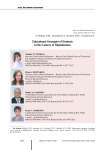
Educational strategies of students in the context of digitalization
Статья научная
Digitalization of education has a serious impact on the nature of the transformation taking place in the learning process and also on the interaction of all participants in the educational process. However, these changes have regional specifics due to uneven digitalization of Russia’s constituent entities and the peculiarities of integration of digital methods by various educational centers. At the same time, the changing meanings and values of education make it necessary to identify and describe educational strategies of modern students, as well as motivation, determining educational strategies. The study is based on the data obtained in the course of the surveys conducted by ISPR FCTAS RAS in 2021 and 2023. Arrays of three large educational centers (Moscow, Yekaterinburg and Irkutsk) were used for the article. We clarify the impact that distance learning, which had to be implemented in the context of the COVID-19 pandemic, had on the educational process, and show that the accelerated process of transition to new educational practices was carried out unevenly, which reflects regional differences in the assessment of online learning formats. It is noted that students’ educational strategies are based on understanding the category of life success. Professionalism is an important component of life success for modern youth. During the data analysis, we identify two main strategies for achieving life success. The first strategy assumes high importance of intelligence as a key component in achieving success and welfare, regardless of the chosen field of activity. The second strategy involves relying on a high level of development of professional data and competencies in a chosen professional environment. Empirical data demonstrate a higher level of proficiency in basic digital skills among students in Moscow. The evaluation vector is shifted from the capital to the periphery. The same situation is observed with respect to students’ assessments of skills related to personal characteristics and safety. The obtained conclusions can become the foundation for designing and implementing tools for adjusting the management system of higher education on the path of modernization processes associated with widespread introduction of information technology.
Бесплатно
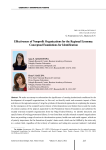
Статья научная
We make an attempt to substantiate the significance of creating institutional conditions for the development of nonprofit organizations; to this end, we identify social and economic impact of their activities on the regional economy. Using the synthesis of theoretical approaches to explaining the reasons for the emergence of the nonprofit sector (theory of interdependence and failure theory) and the results of content analysis of the projects supported by the Presidential Grants Foundation and submitted by socially oriented nonprofit organizations from the Volga Federal District, we identify directions and specify forms of leveling government failures. It was found that socially oriented nonprofit organizations focus on providing a range of services in the education system, health care and social support, which are of priority importance for the formation of people’s basic needs, which can be fulfilled by the state only to a certain limit, regardless of the territory of residence and taking into account residents’ individual needs. When assessing the effectiveness of their own work, representatives of socially oriented nonprofit organizations focus on its social significance, using mechanisms of point solutions to the current problems of the target audience. We identify the range of potential socio-economic effects from the activities of socially oriented nonprofit organization carried out on a systematic and long-term basis in the context of priority areas of their work. We emphasize that our approach, due to the formation of a unified view among economic agents (government, business, society and nonprofit organizations themselves), expands the idea of its importance for the region’s economy and may become a starting point for the creation of institutional conditions for the development of nonprofit organizations in Russia. The prospects for our future research include modeling the management system of specific regions of the Russian Federation based on the creation of institutional conditions to increase the contribution of socially oriented nonprofit organizations to the balanced development of territories.
Бесплатно
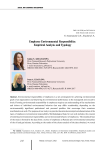
Employee environmental responsibility: empirical analysis and typology
Статья научная
Environmental responsibility of employees is a key prerequisite for achieving environmental goals of an organization and improving its environmental performance at the managerial and executive levels. Forming environmental responsibility in employees requires an understanding of the mechanisms and drivers of individual environmental behavior that may differ considerably, depending on the environmentally significant professional and personal qualities that encourage their conscious manifestation at work. The purpose of our study is to provide theoretical and empirical substantiation of the types of employee environmental responsibility. Methodological basis for our work includes the concept of individual environmental responsibility and environmental behavior of employees. The empirical base of the study is formed by the data from a survey of employees at Russian pro-environmental enterprises of the oil and gas industry. According to the results of the cluster analysis of the data obtained, we reveal characteristics for the role models of environmental behavior and identify four types of employees: ecoconservatives, eco-pragmatists, eco-activists, eco-pro-activists, differing in the awareness and acceptance of the company’s environmental values, compliance with environmental requirements in work activities, interest in participating in additional environmental activities and initiative in addressing environmental issues. The results obtained can be used to study the nature of individual environmental behavior and environmental responsibility; they can be also useful for companies in developing and improving human resource management policies and practices aimed at employees’ environmental development. The main limitation is the fact that we have chosen major oil and gas industry enterprises as the object of research, and they have a highly developed environmental policy, environmental management and the practice of environmental development of personnel; this narrows the significance of the results obtained within one industry, not allowing us to draw generalized conclusions and give practical recommendations.
Бесплатно
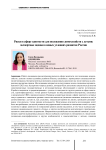
Статья научная
The work investigates employment risks for households with children in the new conditions of Russia’s development amid the special military operation, unprecedented external sanctions pressure at the stage of transition to the country’s sovereign development. The study is based on the findings obtained during a specially organized expert survey in 2023, the data of which were supplemented by an analysis of the results of monitoring state and non-state surveys and other sources. The work reveals and ranks, taking into account their importance, groups of risks in the field of employment, identified from the point of view of the “contour” of their conditioning (internal risks, related to the ongoing special military operation, and external risks). We name specific risks in the field of employment that can lead to a decrease in the level and quality of employment (including a decrease in income) in households with children and, as a result, a decline in their standard of living; these risks are ranked in terms of relevance. The obtained research results may be in demand for the development of state policy in relation to families with children, employment policy, and improving the standard of living, including within the framework of the national project “Family” and other long-term program-targeted and integrated management tools. Directions for further research are related to supplementing the list of identified risks and in-depth studies of their “carriers” (socio-demographic and other features) in households with children, the impact of risks, taking into account the concentration of risks and the number of their “carriers” on the employment situation and standard of living in various types of households.
Бесплатно
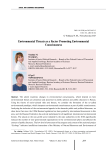
Environmental threats as a factor promoting environmental consciousness
Статья научная
The article examines changes in environmental consciousness, which depend on how environmental threats are presented and perceived in public opinion and public discourse in Russia. Using the theory of socio-cultural risks and threats, we consider the formation of the so-called environmental paradigm, which interprets environmental consciousness as part of public consciousness. Analyzing the inclusion of the environmental agenda in the domestic public and political discourse, we show show that since the 1990s Russian legislation has been guided by international documents in this area, and the Russian Federation has actively participated in all significant international environmental forums. The attack on the non-profit sector initiated by the state authorities in the 2010s significantly reduced the number of non-governmental organizations in the environmental sphere and affected the content of public discourse. The low level of awareness of the progress and content of the national project “Ecology” indicates insufficient interaction of the Ministry of Natural Resources and Environment of the Russian Federation with civil society institutions and representatives of local environmental initiatives. As a result, poor involvement of the population in environmental processes can potentially lead to the emergence of occasional environmental protests. The data of sociological studies show that public awareness of environmental threats is growing rather slowly and unevenly. In the overall rating of threats, environmental threats usually rank 3rd-4th, but this has a small effect on environmental behavior and on the formation of nature-saving social practices. We consider promoting environmental consciousness as a process of helping people to become more aware of anthropogenic risks and strive for a healthy ecological environment. The typological group of “responsible” individuals identified on the basis of this approach differs from the group of “indifferent” ones according to a number of socio-demographic and sociopolitical features and demonstrates weak positive dynamics.
Бесплатно
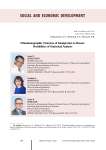
Ethnodemographic structure of immigration to Russia: possibilities of statistical analysis
Статья научная
Migration processes, unlike natural population movement, are more diverse, can be caused by different reasons and have different directions and deadlines. In this regard, the boundaries between the types of migration (and migrants) are often unclear, which complicates not only their classification, but also the choice of suitable sources for obtaining information about them. Ethnodemographic changes are taking place in modern Russia; this makes it necessary to monitor them more closely and expand approaches to their accounting. The purpose of the study is to develop proposals for the registration of immigrants based on the analysis of approaches developed in Russian and foreign practice aimed at studying and assessing the ethnodemographic characteristics of migrants. As a result of the study, we show that the most complete information about immigrants in Russia is provided by population census data, but the dynamic nature of migration flows requires additional measures related to their accounting. Current migration accounting is carried out using various forms, but the information most often remains at the level of authorized organizations and is not publicly available for analysis in the context of Russia’s regions and in the context of the countries whose citizens have arrived in Russia. Sample surveys allow us to study in more detail certain aspects of migration processes or certain categories of migrants, but their results may not always be comparable in time. We suggest the possibility of including additional data on the place of birth of the respondent’s father and mother in the population census sheets. For Russia, as well as for other countries, citizenship is an unstable feature, since migrants can become citizens of the country of residence. Requesting data on the place of birth of the respondent’s father and mother does not contradict constitutional law and helps to obtain a more clear idea concerning the ethnic and cultural roots of the individual.
Бесплатно
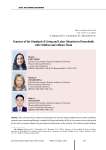
Features of the standard of living and labor situation in households with children and without them
Статья научная
The relevance of the study is determined by the need to improve public policy in order to address current issues concerning Russians’ standard of living and quality of life in the context of new risks posed by the socio-economic impact of a growing external pressure on the country. The article presents findings of a study that identifies the features of the standard of living of households with children (target group) and without children (control group), and considers the role of the labor situation of household members. The standard of living of households was considered through its modeling by per capita money income and by quality of housing conditions that were assessed with the help of social standards. We reveal that the most common models for households with children are those of low and lowest standard of living, which are less typical for households without children. Households with children are much more likely, in comparison to households without children, to face the most vulnerable situation in terms of income and quality of housing conditions. The article considers the labor situation of economically active members of households with different levels of per capita money income. We reveal the differences in the level of employment of persons aged 15 years old and older, with different income levels, living in households with and without children, depending on the age group. We assess the level of income from main employment, which ensures the positioning of households by standard of living (taking into account the actual dependent burden) and reveal that the presence of children increases the risks of households entering the lower strata by standard of living. We consider main reasons for the unemployment of persons aged 15 years old and older (by age group) living in households with children with different income levels and also determine “reserves” for increasing the level of employment in households with children and, as a consequence, their income level.
Бесплатно
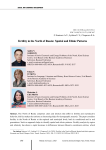
Fertility in the North of Russia: Spatial and Ethnic Patterns
Статья научная
The North of Russia comprises cities and districts that differ in fertility and reproductive behavior; this fact makes the territory an interesting object for demographic research. The paper considers fertility in the North of Russia at the regional and municipal levels, both in conditional and in real generations. Such an approach helps to identify spatial and ethnic patterns. Fertility analysis by region and ethnicity has shown a rapid decrease in differences between Russia’s constituent entities, which indicates the accelerated completion of the demographic transition in territories with high fertility. At the same time, reproductive behavior patterns within regions are becoming more diverse, which is a sign of the second demographic transition. Indicators above the level of simple reproduction are preserved only among Tuvans and some small-numbered indigenous peoples of the North. At the municipal level, fertility in conditional generations was estimated using data from the population censuses of 2010 and 2021, and in real generations by calculating the total fertility rate using the indirect standardization method for 2015-2023. We identified groups of territories in the North of Russia with high and low fertility rates. It is shown that the median fertility rate in the northern territories has decreased significantly in recent years. A correlation analysis of fertility rates and the ethnic composition of the population revealed that fertility in a municipality is determined primarily by the proportion of titular ethnic groups and small-numbered indigenous peoples of the North, and among young cohorts - only by the proportion of small-numbered peoples. The results obtained are of interest for developing demographic policy measures and making forecasts at the regional and municipal levels. In further research, it is recommended to pay attention to the dependence of fertility on the development of the social infrastructure in the North of Russia
Бесплатно
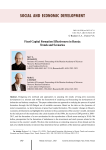
Fixed capital formation effectiveness in Russia: trends and scenarios
Статья научная
Designing new methods and approaches to assessing the results of long-term economic development is a relevant task within the framework of analyzing and forecasting the development of industries and industry complexes. The paper substantiates an approach to studying the process of capital formation through the full-fledged use of available resources. Based on the data on the dynamics of metal consumption, we show features of gross fixed capital formation. We consider changes in Russia's economic development and highlight three periods in the accumulation of the country's wealth, estimated by the indicators of the metal stock (the crisis situation of the 1990s, the recovery GDP growth in 2000-2013, and the formation of a new mechanism for the reproduction of fixed assets starting in 2014). We define prerequisites for the formation of imbalances in the investment and stock process related to the increase in the country's wealth. We show that restrictions on attracting resources from abroad and the lack of a reliable domestic investment base determine the key problems of the domestic capital formation mechanism. We arrange countries of the world in groups according to capital formation indicators, including the availability of resources for capital formation and the availability of favorable conditions for the commercial use of investments. We substantiate the need to increase the effectiveness of capital formation management in Russia. We emphasize that investments in the national investment complex can become effective only if the current criteria for evaluating the effectiveness of economic activity are revised. We provide an overview of the positive and negative scenarios for the development of the domestic capital formation system in the medium term. State management of the investment and stock process is singled out as a necessary element of a positive medium-term forecast
Бесплатно
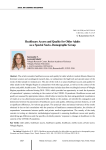
Healthcare Access and Quality for Older Adults as a Special Socio-demographic Group
Статья научная
The article considers healthcare access and quality for older adults in modern Russia. Based on literature sources and sociological research data, we substantiate the high level and special nature of the needs of older people in medical care. The aim of the work is to assess healthcare access and quality for older adults in the Vologda Region in comparison with other age groups, as well as in the context of the private and public health sectors. The information base includes data from sociological surveys of Vologda Region population collected during 2018-2024, which provided an opportunity to track the dynamics of respondents’ opinions, including in the context of the COVID-19 pandemic. Healthcare access and quality are assessed by appropriate indices, which helps to interpret the data using graphical visualization of results in a two-dimensional assessment field. Based on the analysis, we identify the conjugation and dichotomy between the parameters of healthcare access and quality, reflecting common features, as well as significant differences, for various age groups. The practical value and special relevance of the results obtained is due to their correlation with the practices of healthcare commercialization, the division of respondents’ assessments between public and private medical organizations. The novelty of the study consists in testing an alternative methodological approach to assessing healthcare access and quality, identifying age differences and the specifics of elderly patients’ response to changes in healthcare in the context of the COVID-19 pandemic.
Бесплатно

